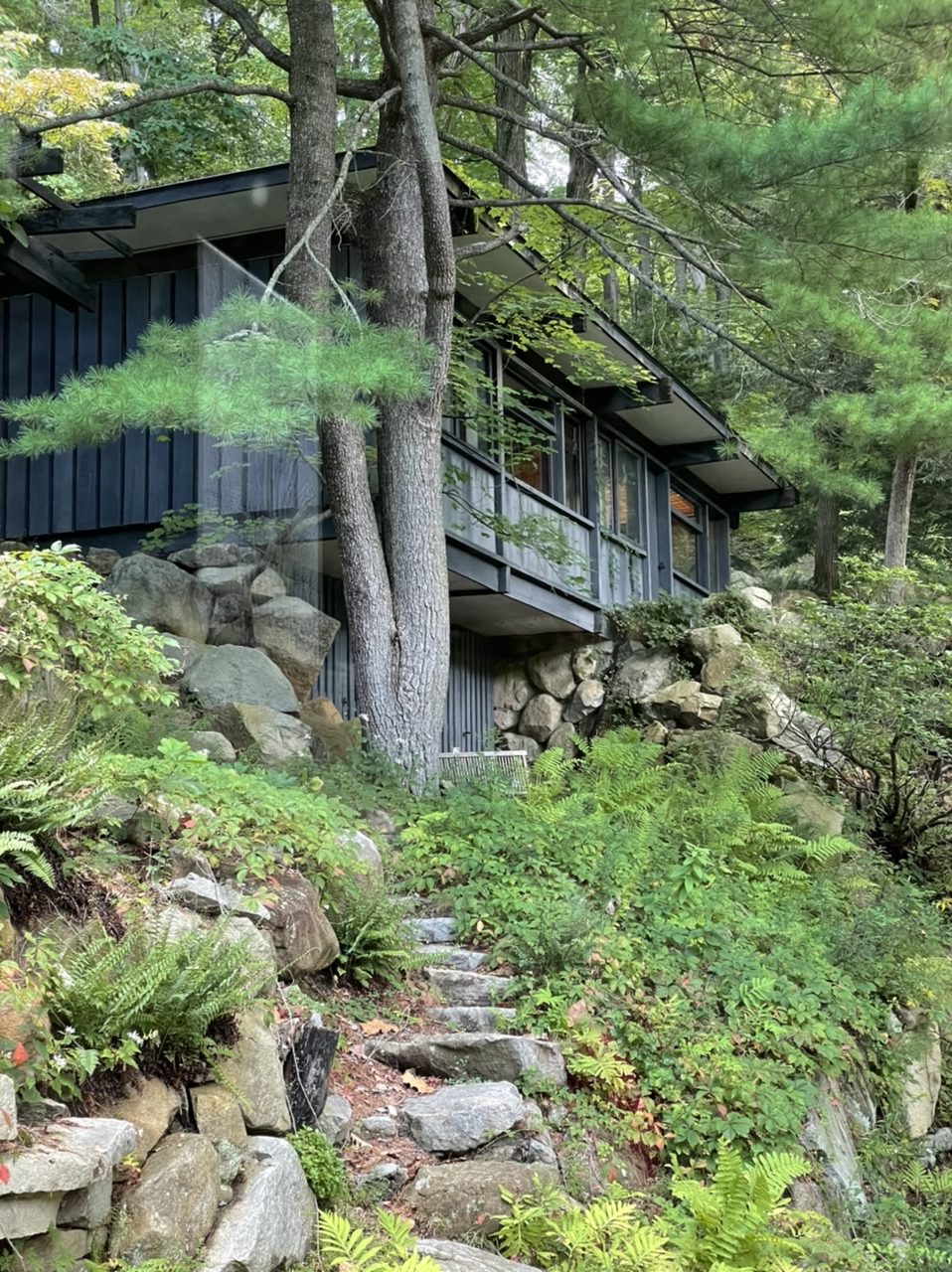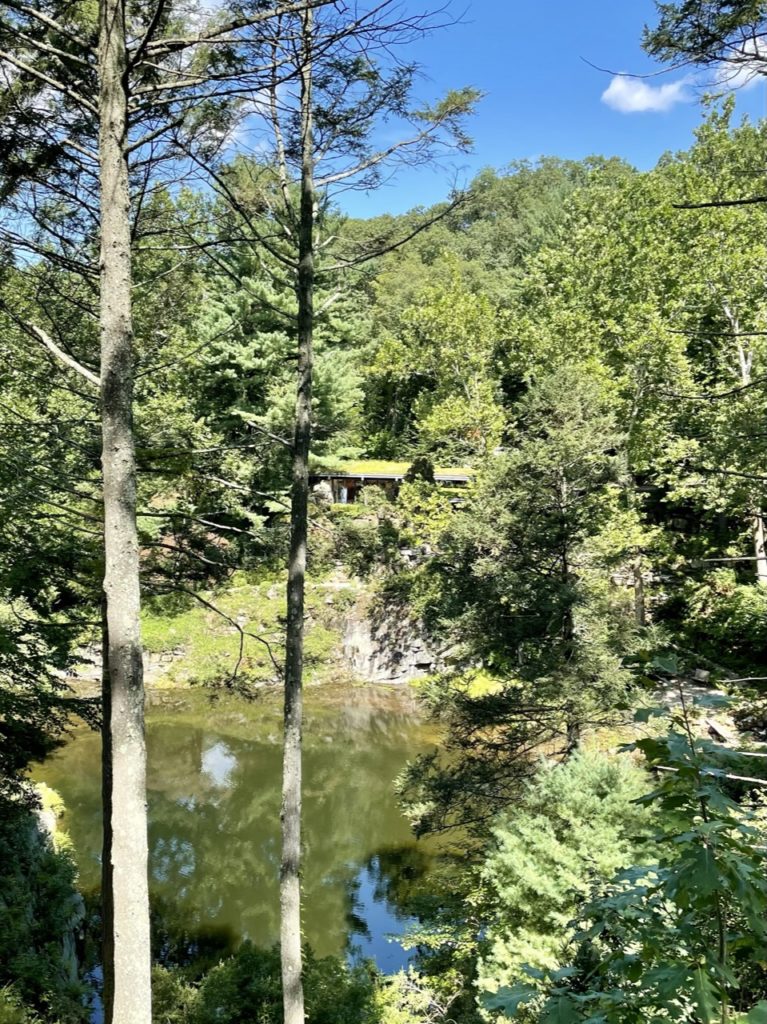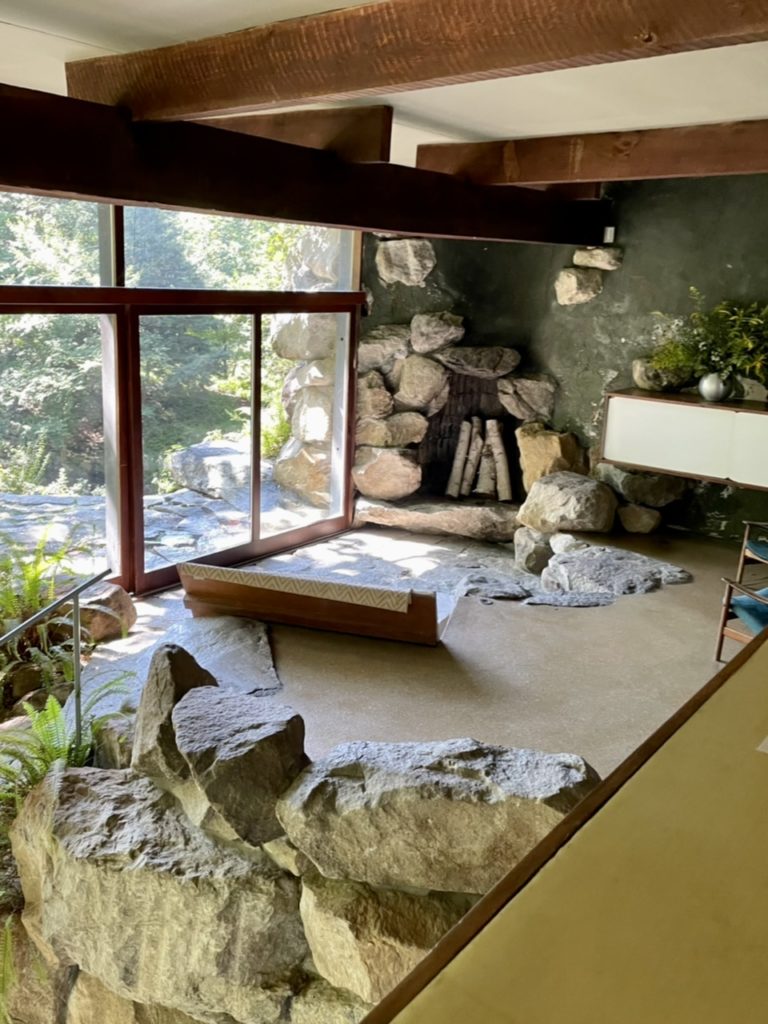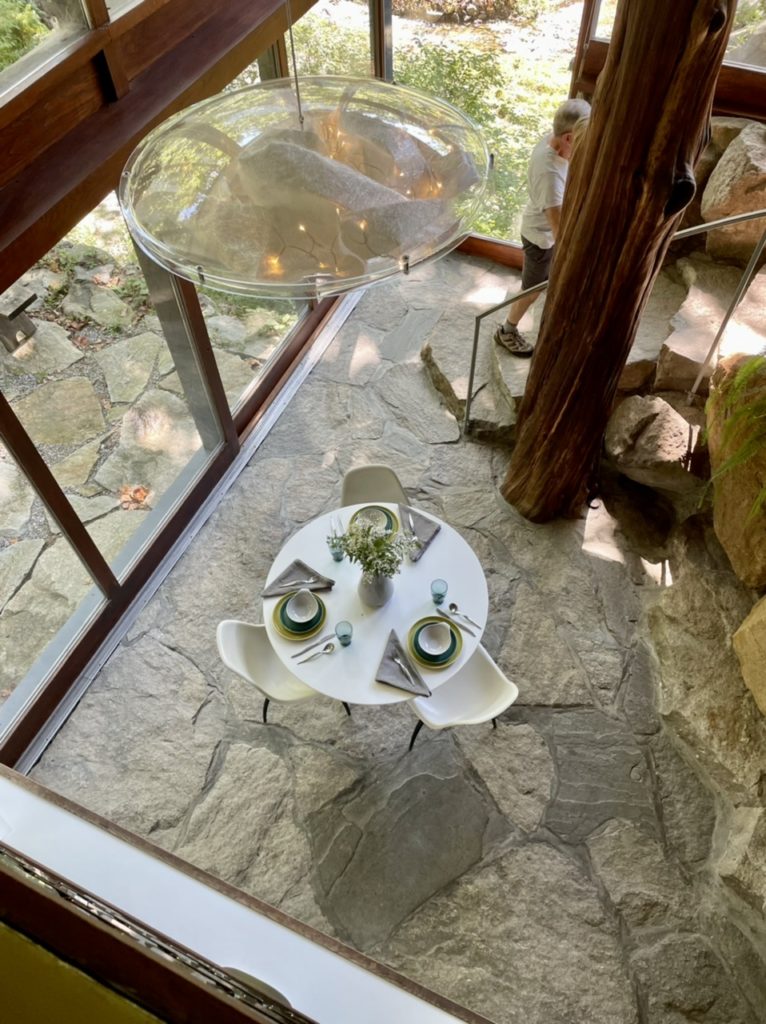Ceramic art by Maynard Tischler on display in the Kirkland Museum of Fine & Decorative Art (Denver, Colorado).
Tag: ceramics
Aspiring to Easier Living at Manitoga
Recently we visited Manitoga, a National Historic Landmark that is the studio and home of industrial designer Russel Wright. A prime advocate of what has been called “Livable Modernism,” Wright, with the aid of his wife, Mary, became one of the most influential and well-known designers of the 1930s to 1950s. His pottery, tableware, and furniture brought Modernism to the American masses (quite literally: his most popular line of pottery and one of his furniture lines were both named American Modern).
Together, they wrote the 1950 manifesto Guide to Easier Living which promoted radical ideas like “buffet suppers, one-pot meals, portable seating and lots of double-duty storage…They may be the inventors of modern grad student storage: wooden shelves on cinder blocks hidden behind a curtain” (Alexandra Lange, “Easier Living, By Design”, The New York Times July 23, 2010).
Manitoga came later in his career. He and Mary purchased the land in the Hudson Highlands north of New York City around 1942 and spent many years modifying the landscape, including turning an abandoned quarry pit into a swimming pond complete with a waterfall.
They lived in a cottage (still standing, but not part of the Landmark) next to the quarry. It was not until several years after Mary’s death in 1952 that Russel began building the house and studio (designed with architect David Leavitt). It was completed in 1960 and Russel lived there with his daughter Annie and her governess/housekeeper until his death in 1976.
Dragon Rock is a rare instance of Mr. Wright contradicting his theory of “easier living,” — his daughter, Anne, recalls arduous hours spent vacuuming the rocks and keeping all 11 levels in some semblance of order.
Richard Horn, “Collecting Russel Wright” The New York Times August 23, 1979.
Art and Design of the New York Central Railroad
The other fab Jazz Age exhibit at the Albany Institute of History and Art is Romancing the Rails: Train Travel in the 1920s and 1930s, which focuses on the New York Central Railroad.
It’s cool to see the original paintings for some of their now classic advertising posters. There’s also a lot of items from industrial designer Henry Dreyfuss’s work on the 20th Century Limited, “The Most Famous Train in the World.” Dreyfuss designed everything from the streamlined locomotives to the dinner plates.
Romancing the Rails is on display through February 2022.



Featured image: Observation Car design for the 20th Century Limited by Henry Dreyfuss, gouache on paper, 1938.
New Jersey’s State Bird
In association with the Fine Feathered Friends exhibit, here’s history behind how the Eastern Goldfinch became New Jersey’s official state bird.
Anthony Kuser, who is introduced late in the video, was also a sponsor of the search for a surviving passenger pigeon. In 1909, he offered a $300 reward for proof of an undisturbed passenger pigeon nest. The ensuing search was unsuccessful (many sightings of presumed passenger pigeons turned out to be mourning doves) but the reward, and the publicity surrounding it, helped establish with certainty the extinction of passenger pigeons in the wild.
Extinct Birds in Ceramic
The New Jersey State Museum‘s Fine Feathered Friends exhibit combines mounted birds from the natural history collection with ceramic birds from the fine arts collection. Two extinct birds, the Carolina Parakeet (Conuropsis carolinensis) and the Passenger Pigeon (Ectopistes migratorius), are immortalized by the Stangl Pottery Company/Fulper Pottery Company of New Jersey.
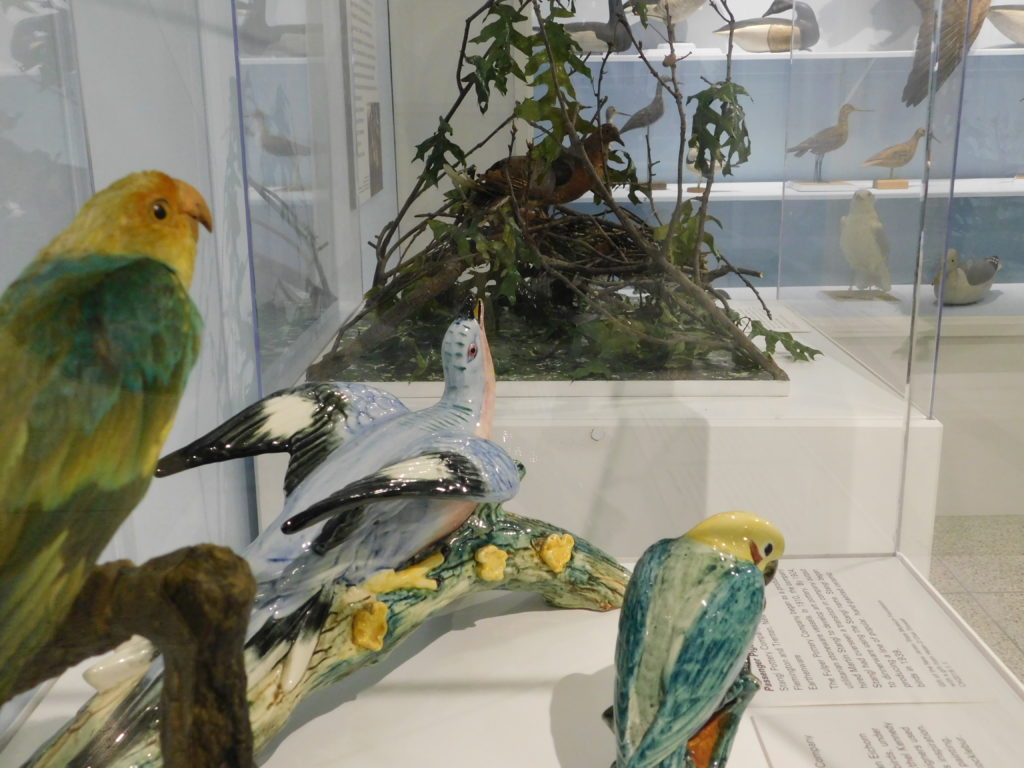
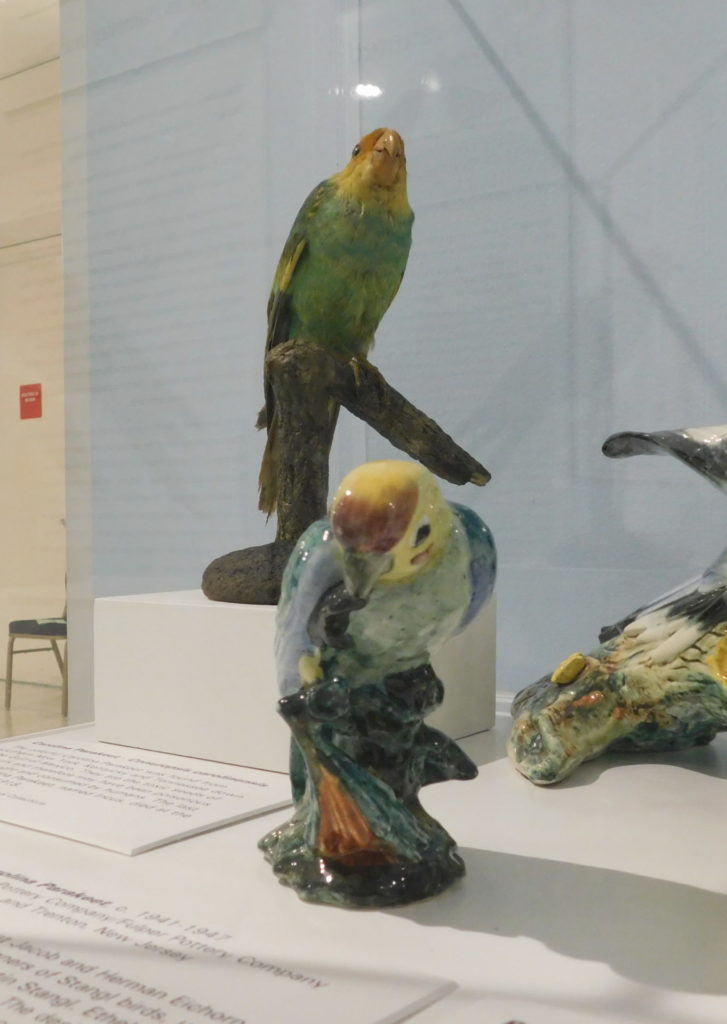
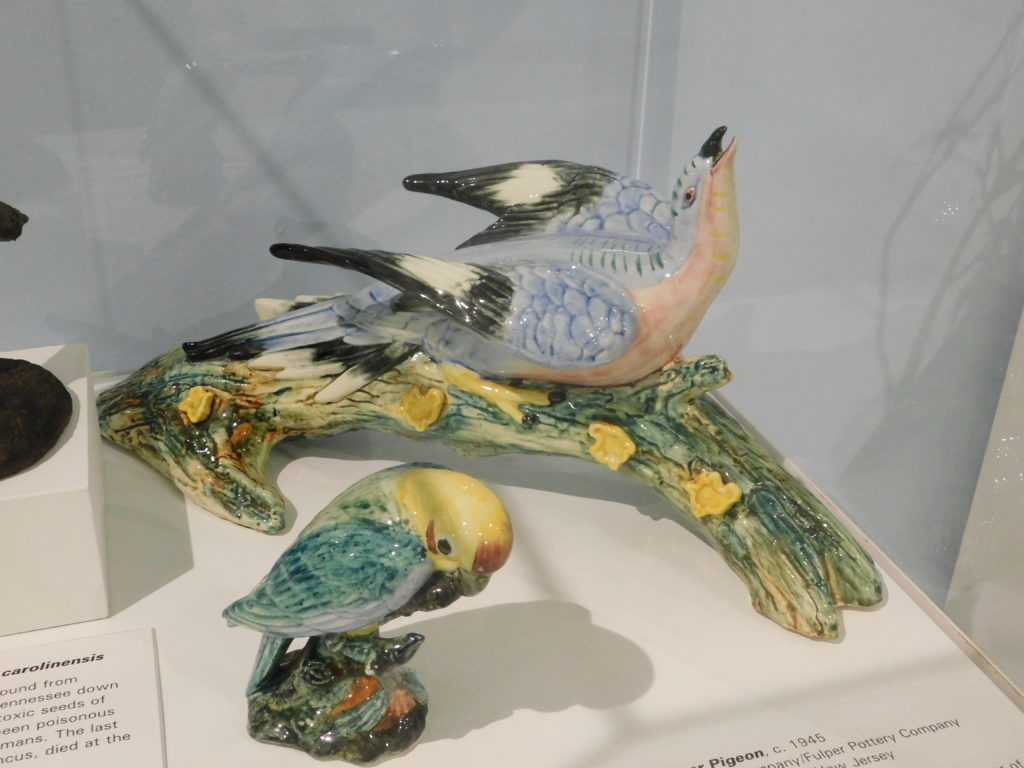

Coffeehouse Archaeology in England

Before England fell in love with tea, there was coffee. Beginning in the 1600s, coffeehouses spread through England. Historians think of them as the more polite, refined counterpoint to taverns and alehouses, a place where the customers – mostly male – could drink and discuss and debate the news of the day.
It’s a bit surprising that almost no coffeehouses have been explored archaeologically, but Craig Cessford and colleagues now describe artifacts, tightly dated to between 1770 and 1780, from a small brick cellar associated with Clapham’s Coffeehouse in Cambridge, England.
The Jazz Age in Britain: New Exhibit at Two Temple Place, London
Rhythm and Reaction: The Age of Jazz in Britain has opened at William Waldorf Astor’s former Mansion, Two Temple Place, in London.
From the press release:
Jazz provoked reactions ranging from devotion to abhorrence when the idea, and then the sound, of the music first entered the consciousness of the British public in the aftermath of the First World War. Visiting American groups such as the Original Dixieland Jazz Band and the Southern Syncopated Orchestra offered Britons their first chance to experience the music live.
The growing interest in jazz brought black and white musicians, artists and audiences together, and was crucial in influencing changes in British society, moving from stereotypes descended from the minstrel show to a more nuanced understanding of and interest in African American and black British culture.
The exhibition brings together painting, prints, cartoons, textiles and ceramics, moving film, instruments and the all-important jazz sound, to explicitly examine the influence of jazz on British art, design and wider society.
More details and photos at 1843 Magazine.
How to Make Battleship Curves
…the old-school way, with paperclips. David Hurst Thomas illustrates:
“Seriation diagrams were once constructed by hand (literally). Frequencies of temporal types were converted to percentages, then drawn on individual strips, which were then moved up or down until they approximated a series of battleship-shaped curves (Ford, 1962: fig.8). This tedious and subjective procedure has since been replaced by computer programs.”
From:
David Hurst Thomas 2008, Addressing Variability in the Pooled Radiocarbon Record of St. Catherines Island, in Native American Landscapes of St. Catherines Island, Georgia. II The Data. Anthropological Papers of the American Museum of Natural History No. 88. Figure 16.9.
previously posted on Adequacy.
“Dish Camp” for Historic Ceramics Aficionados-Scholarship Available

Note that the deadline for applying is coming soon!
Historic Eastfield Foundation is pleased to announce that it will offer two scholarships for emerging ceramics scholars to attend the Historic Ceramics Symposium, better known as “Dish Camp”, June 23-24, 2017 at Historic Eastfield Village in East Nassau, New York. Scholarship recipients will receive a tuition waiver for the two day program, lunch both days, and a period dinner on Saturday night. Recipients will be responsible for their own transportation and lodging. Primitive lodging at Brigg’s Tavern is available on site for no cost.
Those interested in applying should provide a one page written essay that discusses their personal interest in historic ceramics and why they believe that attending Dish Camp would benefit their education. Please send your essay and contact information via email to Debbie Miller, Program Chair, at deblmiller@hotmail.com<mailto:deblmiller@hotmail.com>.

